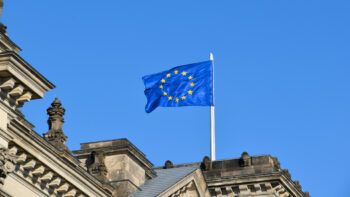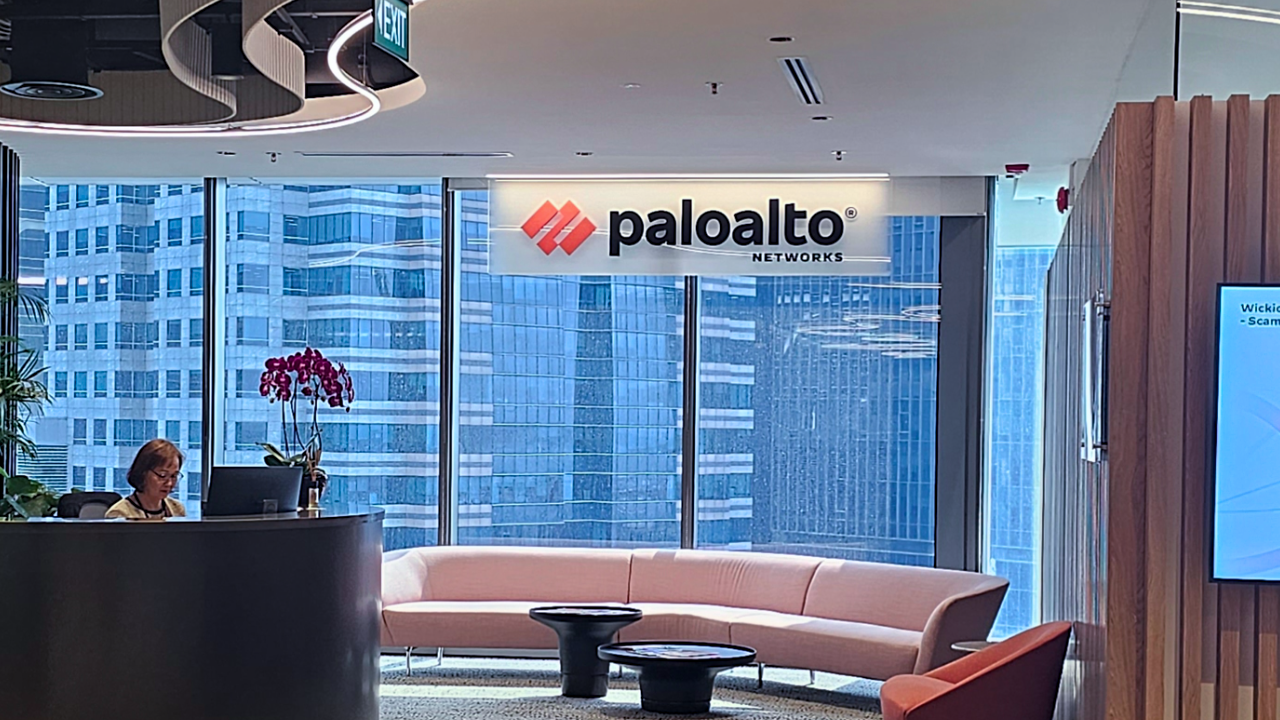Action S.A., as a supplier to business customers, has a number of campaigns and partner programmes running. Since last year, the company has been running a loyalty programme called ‘iSE-coin Hunters’. It is aimed at all Action S.A.’s B2B customers registered on i-service, its business trading platform, and is based on collecting points called iSE-coins, which automatically accrue during purchases. The points earned can be spent by the buyer on prizes under the Competition option, i.e. goods, services or e-vouchers from the Sodexo catalogue. These prizes can be claimed by different people from the same company. On the other hand, in the Promotion option, the reward is the post-trade discount the company is entitled to. We asked Sławomir Harazin, Vice-President of Action S.A., about why it is worth running affiliate programmes in B2B.
Bartosz Martyka, BrandsIT: Action has been successfully executing its business in the IT market for years, more recently in other industries as well. And you, as vice-president, have a direct influence on shaping the company’s strategy. Let’s focus on the topic of affiliate programmes. Can you explain to us what programmes are in the context of B2B business?
Slawomir Harazin, Action S.A.: Over the years I have come across different evaluations of affiliate programmes. Some say it is a very good thing, others look at them only through the prism of cost. As you can see, these opinions are divided. This is confirmed by the results of studies on affiliate programmes, which are also inconclusive. In my opinion, affiliate programmes have more advantages than disadvantages and are nevertheless useful because they are a great complement to marketing activities – they build additional connections between customer and supplier. And this is something that the customer really wants today, because they want to know that they are being taken care of. This is given, in part, by the loyalty programme, which creates a good and favourable atmosphere for business, increases customer loyalty, builds customer commitment. And this is borne out by the research into the results of our programmes.
“Affiliate programmes have more pluses than minuses and yet they come in handy because they are a great complement to marketing activities – they build additional connections between the customer and the supplier.”
Bartosz Martyka, BrandsIT: And what are the main benefits of implementing partnership programmes in companies?
Slawomir Harazin, Action S.A.: First of all, in B2B, it is very important to constantly work with the customer, to build interaction with them. And this is much more costly than acquiring a new one, but it is also worthwhile because we are fighting for their loyalty and trust. Once we realise this, we have to ask ourselves: how do we want to achieve this customer retention from the company’s point of view. Every participant in the programme has to get some benefit from it for themselves, for it to make sense and for it to work, so the benefit for our partners, our B2B customers, is that they generate additional profits by generating purchases. This could be vouchers, rewards in kind, discounts, services. It all depends on the form of the loyalty programme. In a nutshell, the customer, when cooperating with us, must have an additional benefit resulting from the loyalty programme in question.
For the customer, all these benefits are something extra, an added value to the business they do with us anyway. For us, on the other hand, it is additional support for customer loyalty. On the other hand, an important element in B2B loyalty programmes is the ability and opportunity to develop the offer, moderate sales and cooperate with manufacturers. With a well-developed programme strategy, we can put the emphasis on what we want to achieve in a given moment. A loyalty programme provides these opportunities and then the whole business ecosystem starts to function well, because there is a normal flow of trade, normal business. And it’s all tied together with that extra buckle in the form of the loyalty programme, which brings it all together. A comparison with music comes to mind. When you create music and mix it, you usually finish it off with mastering, i.e. you add a compressor and a limiter, for example, which bring it all together. The loyalty programme is exactly the kind of thing that binds the business together and I think it completes a good, fruitful collaboration.
“The loyalty programme is exactly the sort of thing that brings the business together and I think it complements a good, fruitful partnership.”
Bartosz Martyka, BrandsIT: What problems or challenges might arise when implementing such a loyalty programme in a company?
Slawomir Harazin, Action S.A.: The challenges are many and so are the potential problems, because there are three main areas to integrate. One is IT, from the planning and implementation of the entire programme, to the interface for the customer and the trader and the connection of the programme for the manager with other systems in the company. The second such extremely important area, even crucial, is the whole tax area. As is well known, all bonuses and other gratuities are under the watchful eye of the fiscal authorities. Hence, it is very important to secure this element of the programme so that our partners, customers and we, as organisers, have clarity and comfort that everything is in accordance with current legislation. The third very important area is the programme strategy itself. We need to know what the goal is, what we want to achieve, what we want to promote and how we want to do it. And then there is the last point. Although the fact that it is the last does not at all mean that it is the least important. It is about the funding of the programme. In a word, the answer to the question: who is to bear the costs of running it. In the optimal model, it is usually the organiser and the partners, i.e. the producers, who support the programme with marketing instead of another form of promotional cooperation.
Bartosz Martyka, BrandsIT: What is your experience when it comes to implementing affiliate programmes?
Slawomir Harazin, Action S.A.: Colourful and rich, because we implemented our first affiliate programmes many years ago. It was a different world, a completely different saturation of the B2B market with this kind of activity. Therefore, over the years we have built and continue to build this baggage of experience by organising many types of programmes. For example, the one we are currently running at ACTION for B2B customers, the ‘iSE-coin Hunters’, is a very complex programme. It is a programme for all our partners and aims to meet the expectations of each person who participates. Hence, there is also a high level of complexity, but you can see that more and more people are taking advantage of the ‘iSE-coin Hunters’ programme, which is gratifying and is the best confirmation that the programme is understood.
Bartosz Martyka, BrandsIT: How do you see the future of affiliate programmes? Is it possible to create a programme that doesn’t need tweaking?
Slawomir Harazin, Action S.A.: In my opinion, no. The world is changing, so the business is changing too. Although, of course, the goal remains the same. An example? Let’s take the automotive market to illustrate this mechanism. Do cars today look the same as they did a few or a dozen years ago? No, they change in appearance, drive, accessories, but the purpose is the same – they are used for driving. And it is the same with affiliate programmes. Their idea hasn’t changed for years, because these are programmes run by big corporations, different companies, and you can see that the main objective is always the same – to build trust. The only thing that changes in all this – apart from the tax layer, of course, which you have to keep track of – is actually what is attractive, beneficial for the customer at any given time. It’s all about the whole environment of the programme, something that makes the client say: OK, here and here I have a similar price, but here I have a loyalty programme, so I buy here, where, by the way, I’ll get points for my purchase, which I’ll put towards rewards.
Bartosz Martyka, BrandsIT: And what would you have to advise companies operating in the B2B segment that are currently facing the dilemma of whether to implement a loyalty programme or otherwise build customer engagement?
Slawomir Harazin, Action S.A.: If they are able to build this engagement in a different, cheaper and more effective way, then I am willing to listen. However, in my opinion, they will have to reach for a loyalty programme sooner or later anyway. And here it is worth listening to the voice of customers and partners, their needs and expectations before implementation, because this can give leaven for a super loyalty programme. And the last thing – get rid of the fear and the assumption that this programme has to be perfect, because I fear that such an approach will not allow you to take a half step forward. So, after the consultation phase, I recommend moving into action as soon as possible and in the process moderating the programme and learning the lessons needed to optimise the loyalty programme from crises.
“It is worth listening to the voice of customers and partners, their needs and expectations before implementation, as this can provide the leaven for a super loyalty programme.”
Bartosz Martyka, BrandsIT: Thank you very much for the interview. As you can see, the topic of affiliate programmes can still be inspiring.
Slawomir Harazin, Action S.A.: Of course it is. I too thank you for the conversation. And I wish all companies implementing affiliate programmes a lot of strength and business courage. And have fun at the same time, because it’s nice to create something for the benefit of partners and customers. And to the users of such programmes, I also wish them great rewards.
Sławomir Harazin – Vice President of the Management Board of ACTION S.A., has been with the company for 25 years, where he started as a regular employee in a regional branch. However, he quickly climbed the career ladder and took up his current position in 2011. Architect of the 2016 change in the Company’s strategy that saw the company move away from the classic IT distribution model to providing services as a distributor, manufacturer, e-commerce project owner and solution provider to the e-commerce industry. His business education included attending the Canadian International Management Institute while participating in the Management 2008 program based on Executive Development at Harvard Business School.
Partner material












